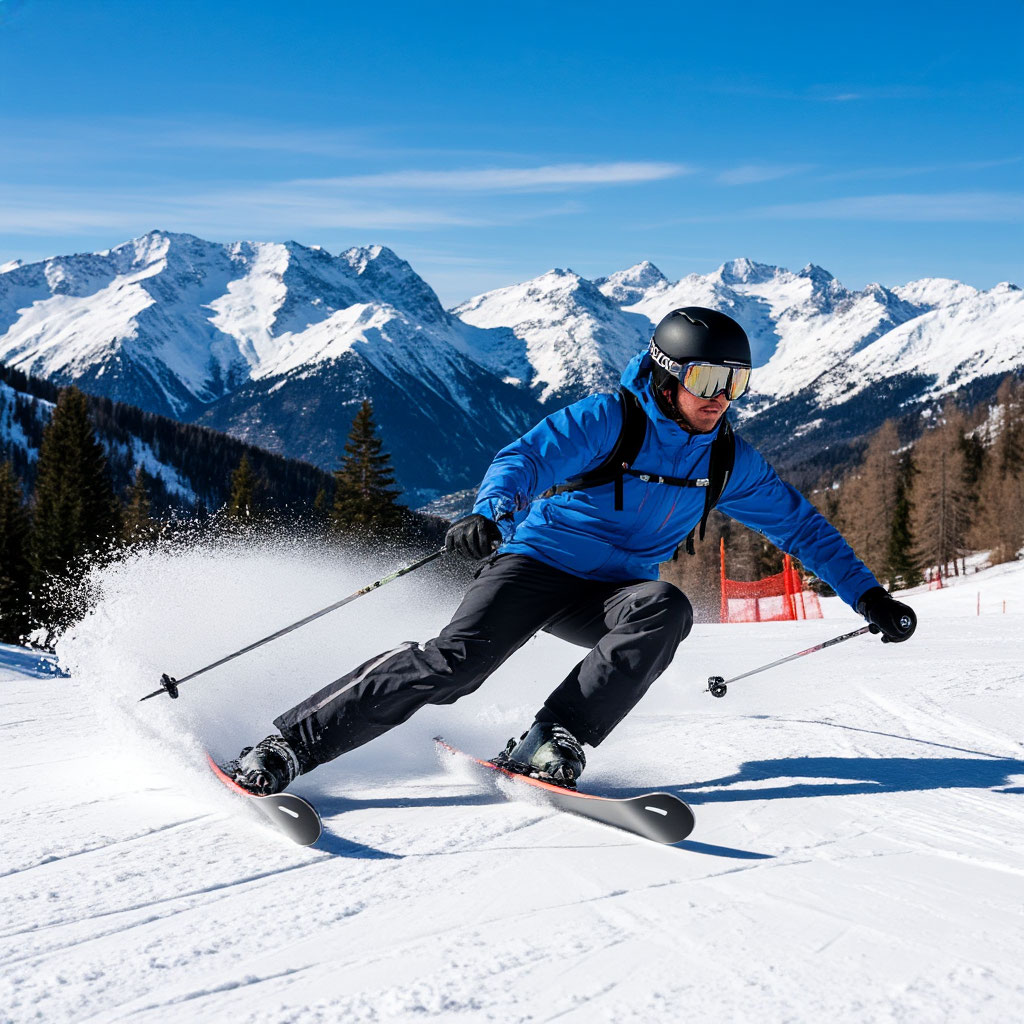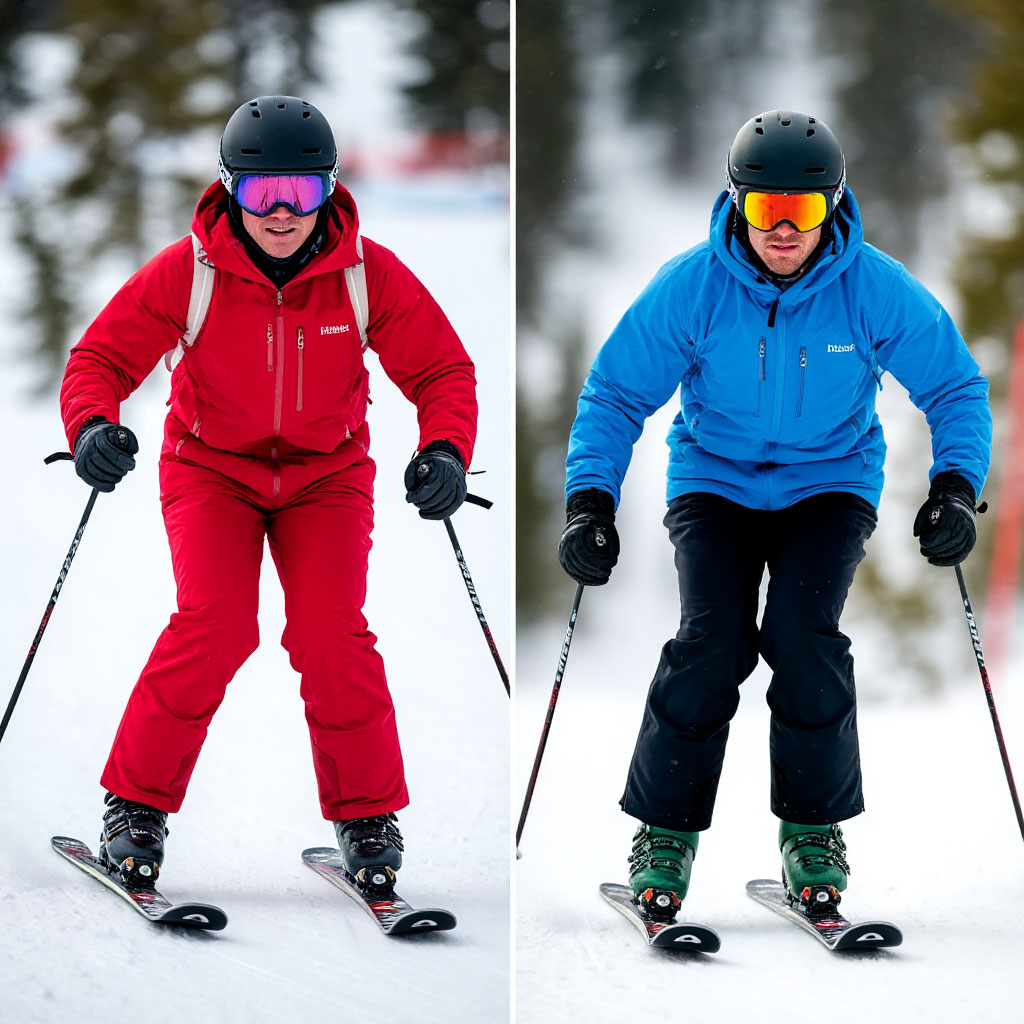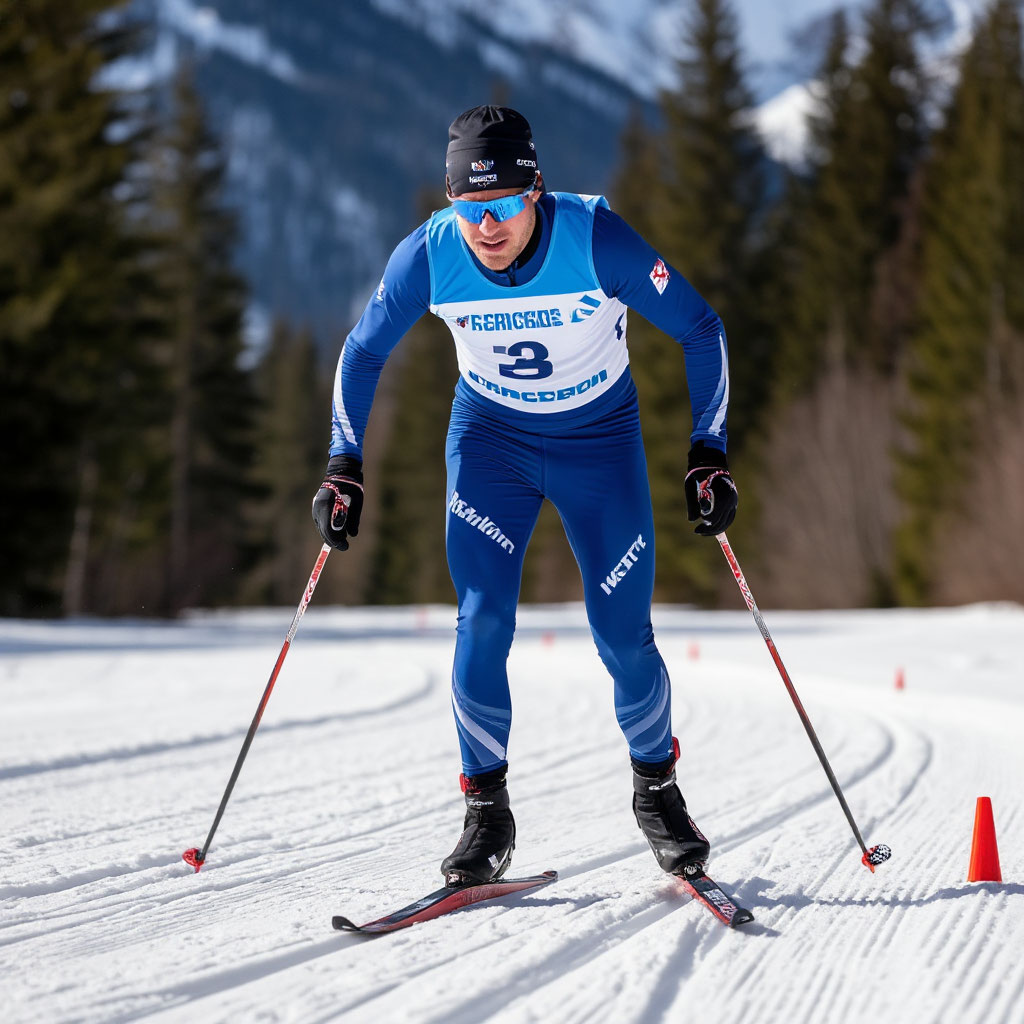Are you ready to move past pizza turns? Learning how to make parallel turns on skis allows you to progress to smoother, faster, more controlled skiing. How do you transition from a wedge to parallel turns? What are the best exercises for turning on skis and how can you avoid the most common mistakes?

The Step-by-Step Guide to Parallel Ski Turns
Learning how to make parallel turns on skis opens up a smoother, faster, more controlled skiing experience. While pizza turns are suitable for beginners, mastering parallel turns allows you to confidently tackle steeper slopes. What are some beginner ski turning techniques?
Start with a strong, balanced stance
Your foundation determines your balance and ride:
- Stand up straight but relaxed, with a slight bend in your knees. Imagine holding a lunch tray in front of you.
- Keep your weight centered on your boots. Leaning back makes the turns feel sluggish.
- To properly make a pizza turn versus a parallel turn, start with a slight pizza stance before the transition.
This balanced position gives you control as you learn to smoothly make parallel ski turns.
Master the wedge to parallel transition
Beginners often rush this step, but smooth transitions are more important than speed. Start with a smooth wedge to control the descent. As you initiate the turn, gradually bring your inside ski parallel to your outside ski. Think of “zipping them together.” Keep your skis hip-width apart to avoid overlapping. This is where many people make common mistakes when learning to turn, such as forcing their skis to parallel too early. Let the movement be natural.
Turn with your feet (not your upper body!)
The important difference between a wedge and a parallel turn? Upper body discipline:
- Turn your knees and ankles, not your shoulders, to steer. Press lightly into the edge of your big toe to initiate the turn. Let your legs guide the skis.
- Keep your chest pointed downhill. If your upper body twists, you will slide.
This beginner ski turning technique separates controlled carving moves from wobbly slides.
Finish with confidence: Complete a cross-hill turn
Many beginners stop their turns too early, losing speed control. Instead, try to finish each turn with your skis perpendicular to the slope. This “braking” position is important for controlling steep terrain. Practice on gentle slopes first. These best ski turning drills build muscle memory before tackling challenging slopes.

From Wedge to Parallel: Improving Your Turning Skills
The transition from wedge to parallel ski turns marks a big leap in your ability. While the wedge (or “pizza”) provides stability for beginners, real progress comes when you unlock the effectiveness of parallel turns. Then the skis work together instead of pushing the snow apart.
The trick is in weight distribution. Unlike wedge turns, which rely on external pressure, parallel turns require subtle edge control and a balanced stance. Start in moderate terrain where you can comfortably connect different techniques without panic braking. When starting each turn, focus on equalizing the pressure between both skis rather than forcing them together. Think “quiet feet” rather than actively changing position.
For smoother transitions, try this drill: walk down the slope with your skis parallel, then smoothly head down while maintaining their alignment. This will teach your muscles the difference between wedge and parallel turns. Pay attention to the inside ski – it should follow naturally, without lifting or twisting.
Edge awareness is what separates beginners from confident advanced skiers. Practice different turn shapes (long C-turns versus fast S-turns). This will help you understand how edge angles affect your line of skiing. On steeper slopes, you will notice that parallel turns provide better grip because both edges are engaged at the same time. This is not possible in a wedge stance.
Remember non-linear progression. Sometimes your initial ski turning techniques will feel regressive, especially in variable snow conditions. When frustration sets in, return to basic exercises like sideways sliding to recalibrate your edge sensitivity.
5 Drills to Improve Your Turn Control Instantly
Having trouble making clean, confident turns? These five essential drills will take your parallel ski turns from wobbly to smooth in no time. Whether you’re working on beginner ski turning technique or improving your skills, these drills focus on the important elements of control—edge awareness, weight transfer, and rhythm. You can practice them all on easy terrain while building muscle memory for more challenging trails.
- J-Turn Drill (Best for Edge Control)
Point your skis straight down a gentle slope, then gradually turn uphill until you stop (making a “J” shape). Repeat both directions to build edge confidence. - Side Slipping (For Balance)
Let your skis slide sideways down a slope. This teaches edge control and weight distribution. - 1,000 Steps Exercise (For Weight Transfer)
While sliding, lift one ski slightly and step forward, alternating feet to practice smooth weight shifts. - Pole Touch (For Timing)
Lightly tap your pole on the snow as you start each turn. This keeps your upper body stable and improves rhythm. - Follow the Leader (For Rhythm)
Have a friend make parallel turns ahead of you. Matching their movements helps turns feel more natural.
Mastering how to make parallel turns on skis takes consistent practice, but these drills will speed up your progress. Focus on one drill per session, paying attention to the differences between wedge and parallel turns as your skills improve. Remember: Even Olympic skiers started with these top drills for turning on skis. Now get out there, try to avoid these common mistakes when learning to turn, and watch your technique improve!

Fix These 3 Common Mistakes in Your Ski Turns
Even experienced skiers sometimes succumb to bad habits that prevent them from making parallel turns on their skis. Fixing three common mistakes can improve your control and confidence on the slopes. Whether you’re working on your beginner ski turning technique or perfecting your carved turns, fixing the problems will help you transition smoothly from wedge to parallel turns, avoiding frustration.
| Mistake | Why It Happens | How to Fix It |
| Leaning Back | Fear of speed | Keep shins pressed into boot tongues |
| Skidding, Not Turning | Hesitation in committing | Roll knees aggressively into each turn |
| Stiff Legs | Tension kills control | Stay loose—bend those knees! |
Fixing these common mistakes will change the way you approach parallel ski turns. Progress comes with deliberate practice. Focus on one fix at a time, incorporating the best ski turning drills we covered earlier. Soon, these common mistakes in learning to turn will be a thing of the past.
Mastering parallel ski turns is all about patience and practice. The best exercises for ski turns – like J-turns and side slipping – will build your muscle memory faster than you think. Start small, focus on proper technique using these proven drills, and celebrate every bit of progress. Remember, even the best skiers were once beginners working on these same fundamentals. Take these lessons to the slopes, trust the process, and soon you’ll be carving with confidence on any terrain.
Tags: Beginners, Skis, Techniques